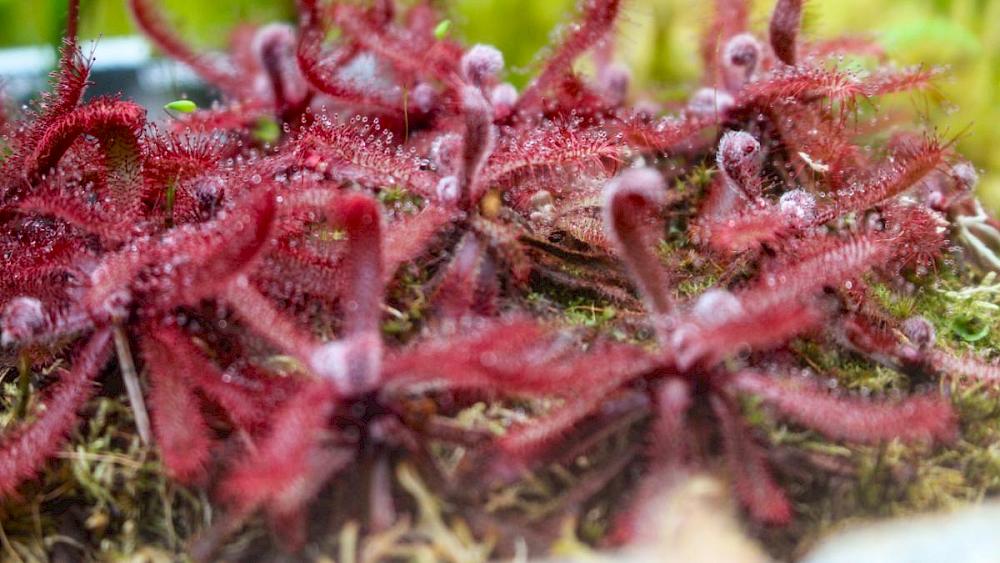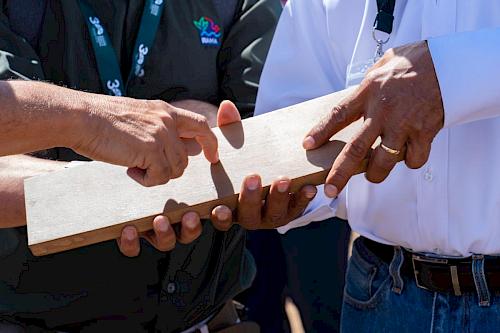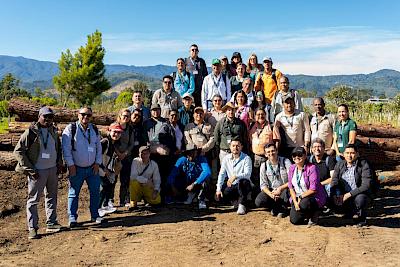A Lifeline for Nature: Global Guidelines Set to Transform Trade in Wild Plants and Timber for a Sustainable Future
What if we could protect the world’s forests and support the communities who rely on them — simply by making smarter decisions about how we trade wild plants?
Today, TRAFFIC is proud to launch a major upgrade to a tool that’s helping governments across the globe do just that: the 9-Step Guidance for making Non-Detriment Findings (NDFs) — a science-based system that ensures wild plant trade doesn’t push species toward extinction.
From towering timber trees to delicate medicinal herbs, wild plants are traded around the world. To export species listed under the Convention on International Trade in Endangered Species of Wild Fauna and Flora (CITES), governments must make a Non-Detriment Finding: an assessment confirming that trade won’t harm the species or its ecosystem.

Daniel Wolf from the Scientific CITES Authority in Germany at BfN said:
In the assessment whether the harvest and subsequent trade in a certain volume of specimens is sustainable many aspects have to be addressed. Often officers are overwhelmed by its complexity as I was, when I had to do it for the first time.”
TRAFFIC, together with Germany’s Federal Agency for Nature Conservation (BfN) and support from the German Federal Ministry for the Environment (BMUV), has been leading the way since 2012 in helping countries make these assessments through the 9-Step Guidance.
What’s new?
Now in its fourth edition, the guidance has been sharpened, simplified, and translated into all official CITES languages, making it easier than ever to use. Governments, scientists, and conservation practitioners can now access:
- Upgraded e-learning courses to train NDF makers anytime, anywhere
- Offline decision trees; vital for remote areas with limited internet

©ITTO & CFMI - New sharing tools to collaborate across borders
- A fully updated platform: 9steps-cites-ndf.org
This upgrade makes the 9-Step Guidance even more accessible, and even more powerful. Paola Mosig Reidl, Co-Lead of Data, Research, and Enforcement Support at TRAFFIC said:
The 9-Step process provides a clear, science-based methodology for ensuring trade in CITES-listed plants is sustainable. It enables countries to make robust, evidence-driven decisions that balance species conservation with socio-economic realities on the ground. Behind every assessment is an ecosystem, a community, and a chance to build a better future for both.”
Real-world results
- In Ghana, with support from BfN, TRAFFIC is supporting new NDFs for Khaya species — a group of African mahogany trees prized for their timber — including essential fieldwork to fill data gaps.
- In Costa Rica, a regional training workshop brought together CITES Authorities from 10 Latin American countries to build expertise on NDFs for timber species like Dipteryx spp. — tropical hardwood trees from Latin America, often used in flooring and furniture, sometimes known as tonka bean trees — newly listed in Appendix II at the last CITES Conference of the Parties.
- In West Africa, another major workshop will follow in Lomé, Togo, this May; both events organised by the International Tropical Timber Organization (ITTO) and facilitated by TRAFFIC and BfN.

©ITTO & CFMI
These efforts also align with and complement the official CITES NDF Guidance framework and Resolutions adopted by the Parties to CITES, ensuring countries are equipped to meet both legal obligations and sustainability goals.
Why it matters
Unsustainable wild plant trade can strip forests bare, push species to the brink, and unravel the lives of communities who depend on them. But when trade is rooted in science and responsibility, it becomes a force for good — safeguarding biodiversity, sustaining livelihoods, and strengthening rural landscapes.
That’s where the 9-Step Guidance comes in: a practical tool helping countries set sustainable harvest levels, protect vulnerable species, and champion legal, life-giving trade.
Because when done right, wild plant trade doesn’t just avoid harm — it helps nature and people thrive, together.



